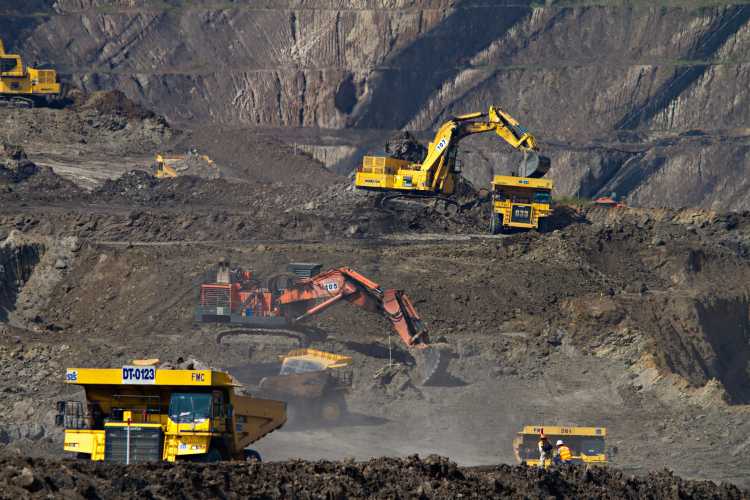
The Union government has approved an Rs 8,500 crore incentive scheme to boost coal gasification projects across the country, seeking to mitigate some environmental impact of extensive use of coal. The first category of the scheme allocates Rs 4,050 crore to public sector utilities (PSUs), allowing for up to three projects to receive a maximum grant of Rs 1,350 crore or 15% of capital expenditure (capex), whichever is lower.
The second category earmarks Rs 3,850 crore for both government and private sector projects, offering a grant of Rs 1,000 crore or 15% of capex per project, again subject to the lower amount. The government plans to bid out at least one project through a tariff-based process, in consultation with NITI Aayog.
READ | Open for business, closed for students? Canada’s visa cap raises red flags
A final category focuses on demonstration projects featuring indigenous technology or small-scale product-based gasification plants, with Rs 600 crore set aside. These projects may receive a grant of Rs 100 crore or 15% of capex, whichever is lower. Despite over 15 years of planning, a comprehensive scheme for coal gasification was delayed due to disagreements between the coal ministry and the ministry of petroleum and natural gas over revenue sharing.
What is coal gasification
Beyond environmental benefits, coal gasification can unlock economic advantages for India. Syngas, the primary product of gasification, can be converted into various valuable chemicals and fuels, including methanol, ammonia, and hydrogen. This creates a platform for diversifying energy sources and reducing dependence on imported fossil fuels. Furthermore, the technology could create new industries and employment opportunities in downstream sectors like fertiliSer production and chemical manufacturing. By strategically leveraging coal gasification, India can not only address environmental concerns but also spur economic growth and technological development.
Coal gasification involves partially oxidising coal with air, oxygen, steam, or carbon dioxide to produce a fuel gas. This process emits less carbon dioxide and facilitates easier CO2 capture, making it a cleaner alternative to coal burning. With India’s goal of achieving net-zero emissions by 2070, the success of coal gasification projects is crucial.
India, rich in coal deposits, particularly in the east, has struggled to reduce its dependence on coal. The country’s energy demand is immense and growing. Domestic coal supply is expected to exceed power generation needs within two to three years, also catering to other sectors. Coal gasification offers a way to utilise these resources sustainably, reducing reliance on oil and gas imports.
However, coal gasification is not a perfect solution. The process itself is energy intensive, potentially offsetting emission reductions, especially if renewable energy sources are not used. Additionally, it is water-intensive, needed for pollutant scrubbing and equipment cooling, raising sustainability concerns. Financing these capital-intensive projects, amid climate worries, poses another challenge.
To navigate the complex challenges of coal gasification, India should prioritise research and development in advanced technologies. Investing in efficient gasification processes, carbon capture and utilisation techniques, and renewable energy integration will be crucial for minimising environmental impact and maximising sustainability. Collaboration with international partners and knowledge sharing within the industry are essential to accelerate innovation and unlock the full potential of this technology. Additionally, stringent environmental regulations and transparent monitoring systems must be implemented to ensure responsible deployment and operation of coal gasification projects.
India seeks to gassify 100 million tonnes of coal by 2030, with the coal sector working towards this goal.
Addressing coal dependence
Gasification alone will not solve India’s coal issues. One approach is using carbon capture and storage technology, which traps CO2 emissions from power plants and stores them underground. Another is installing flue gas desulphurisation (FGD) systems in coal-fired plants, which reduce sulphur dioxide emissions and consequently, acid rain. Many Indian power plants have FGD systems, but upgrades and stricter regulations are needed. Implementation challenges have led to extensions of the original 2017 deadline for FGD installations, now extended to December 2024, 2025, and 2026 for different plants.
While India embarks on its coal gasification journey, it joins a global race seeking cleaner ways to utilise this abundant yet controversial resource. Countries like China, Germany, and Japan have established themselves as pioneers, deploying gasification for various purposes beyond just power generation. China, driven by both energy security and environmental concerns, boasts the world’s largest fleet of gasification plants, producing fuels and chemicals crucial for its industrial might. Germany, meanwhile, utilises the technology to convert biomass and waste into synthetic gas, paving the way for a circular economy model. Japan, ever mindful of resource scarcity, focuses on integrating coal gasification with hydrogen production, offering a potential bridge to a future fuelled by clean hydrogen.
Despite these advancements, global consensus on coal gasification remains elusive. Critics point to its inherent limitations, highlighting the energy requirements and water consumption that can negate emission reductions. Additionally, concerns surround the potential leakage of captured carbon dioxide, undermining the technology’s climate mitigation value.
Nevertheless, ongoing research and development efforts – exploring advanced gasification processes, carbon capture innovations, and renewable energy integration – are striving to overcome these challenges and unlock the potential of coal gasification as a bridge technology in the transition towards a cleaner energy future. India, with its ambitious plans and unique resource base, has the opportunity to become a key player in this global endeavour, shaping the future of a technology with the potential to both utilise fossil fuels responsibly and pave the way for a less carbon-intensive future.
Ultimately, transitioning to cleaner fuels is essential for combating climate change and environmental preservation. India must progressively reduce coal dependency in favour of natural gas or renewable energy, recognising the long journey ahead for a sustainable future.
